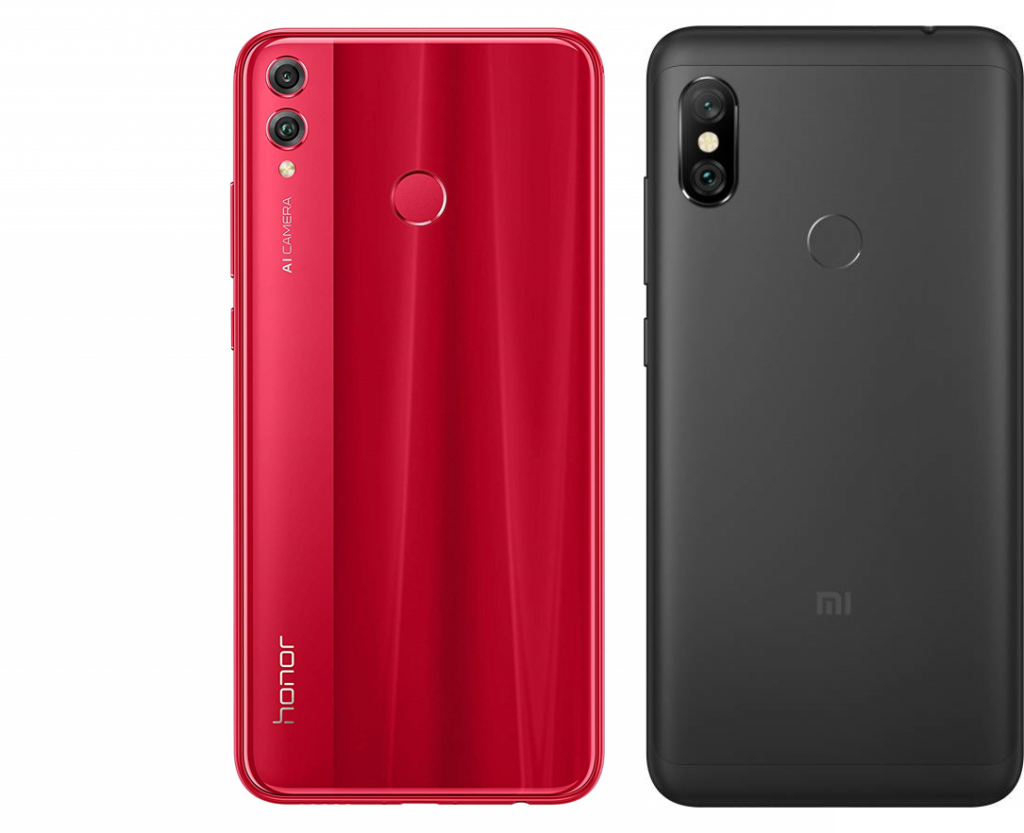This is a sponsored post, and the opinions presented do not belong to the publisher. The mid-segment smartphone market is embroiled in a cut-throat competition featuring the heavyweights from China – Honor and Xiaomi. Xiaomi had the first-mover advantage in India, but Honor has gained ground and has taken the market by storm. While the 6X was ahead of its time, it was the 7X that really captured the nation’s attention. Honor has now followed it up with the 8X, directly pitting it against Xiaomi’s offering in that price point – the Redmi Note 6 Pro.  Arguably the two best phones in this segment, let’s look at how they stack against each other. Design and aesthetics From a visual perspective, the two couldn’t be more different. The Xiaomi Note 6 Pro features an evolutionary design with a premium aluminium back, which feels at home in the mid-segment category. The Honor 8X however, sets a new design benchmark in the category featuring its pioneering glass back with a dual-tone finish. The 8X looks closer to its flagship cousins, making it stand out from the crowd at this price point. In the front, too, the Honor 8X scores higher on account of a bigger screen fitted onto a similar-sized body as the Note 6 Pro. By doing so, the screen-to-body ratio is higher in the 8X, standing at 91%, while for the Redmi Note 6 Pro it is about 86%. Both phones come with a notch, however, it is visibly smaller in the 8X, allowing the screen more real estate. The 8X is lighter and thinner, making it easier to hold and slide into your pocket. Display differences The technology behind the displays is slightly different. The Honor 8X uses an LTPS screen that provides larger pixel densities, and lower power consumption than the standard IPS panel used in the Redmi Note 6 Pro. It achieves this with a ridiculously thin bottom bezel at 4.5 mm, and a smaller notch on top. The 8X is also the world’s first smartphone with TUV Rheinland’s Low Blue Standard Certification, indicating lower blue light emission from the screen, thereby protecting your eyes. The 8X has a slightly higher resolution owing to its bigger screen size. While the Redmi Note 6 Pro has a slightly higher pixel density (403 ppi vs. 397 ppi), the difference is quite small to be noticed in real-world usage. The Honor 8X also has the option of disabling the notch in case it isn’t optimized in certain scenarios. Under the hood While the design and screen have a bearing on consumer decision-making, it all boils down to the performance of the phones. Both of these phones are very different in this aspect as well. The Note 6 Pro is powered by the able Snapdragon 636 processor, with the Adreno 509 GPU. It can handle games admirably and is the standard for mid-segment phones. The Honor 8X however, ships with the new Kirin 710 chipset. Based on a 12 nm fabrication as opposed to the 636’s 14 nm architecture, it is newer, faster and more efficient. So much so that it is usually compared with Snapdragon’s more powerful 660 chipset. The octa-core setup is very similar to the flagship Kirin 960. The 8X also gets Huawei’s proprietary GPU Turbo technology, increasing performance and battery efficiency significantly. You will be able to play a game like PUBG longer, with better frame rates and graphics. The perfect click In the camera department, the Redmi Note 6 Pro makes a solid case for itself with a 12MP + 5MP setup with dual pixels that clicks photos with great ‘bokeh’ effect. In the front, too, is a dual camera setup with 20MP + 2MP sensors, which is great for selfies. The rear cameras in the Honor 8X are of the 20MP + 2MP setup which is significantly enhanced with Honor’s AI camera technology. It automatically recognizes the scenes and objects in the image and makes adjustments to render the best shot possible, all in real-time. Meanwhile, the single 16MP front camera comes with larger pixels to capture more light. It also has portrait mode software optimizations that help click great selfies. Final round The phones are almost identical in other aspects, with the presence of a headphone jack, and other connectivity options. Battery capacity is also similar though the 8X should provide more juice because of GPU Turbo, and the chipset’s efficiency. Memory capacity is more on the 8X, allowing you to store more files in your device. Priced almost similarly, the Honor 8X comes out on top on most counts, especially the ones that matter the most. In the fiercely competitive mid-market segment, the 8X is Honor’s winning gladiator.
The Honor 8X scores higher on account of a bigger screen fitted onto a similar-sized body as the Note 6 Pro.
Advertisement
End of Article


)
)
)
)
)
)
)
)
)



